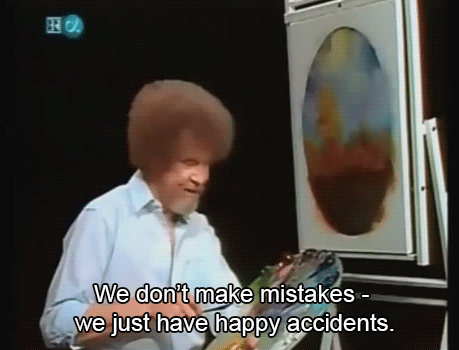How to plan out your feature release to drive product adoption
.jpeg)
.png)
.jpeg)
.png)
Buried somewhere deep within the update notes of a popular app is a missed opportunity. A truly excellent new feature that massively improves user experience is buried under thirty lines of technical mumbo jumbo and minor, aesthetic changes. It took some users a full month after the feature was released to stumble upon the change. The whole experience leaves one wondering: who would release such a game-changing feature to such muffled fanfare?

No matter how excellent your newest feature idea may be, you only get one shot at a first impression. I'd like to help you make it a good one. Below, we’ve highlighted the best practices for planning and announcing new feature releases that build buzz and help maximize product adoption.
Establishing a game plan for feature development, testing, and release helps set expectations and keeps even the busiest of teams on the same page. Tasks and responsibilities can get lost in the chaos that is the development process. Creating and then sticking to a development schedule helps you identify and prepare for potential bottlenecks in the process. You don’t need to hold the rest of your team at a standstill while your programmer codes if you anticipated the downtime in advance.
The benefits of building a development schedule extend beyond building the feature itself. Adhering to a pre-planned project calendar lets you set deadlines for how and when to move forward with feature release announcements. Scrambling to devise a marketing plan in the week ahead of a feature release is stressful and inefficient. Instead, your team can set milestones and goals for when and how to announce your feature as the product is being built.

Tracking your development plan within a project management platform is crucial for visibility and communication. Each individual team member will know their daily responsibilities and looming deadlines at a glance. The team as a whole will know all critical information at every point of the development process. When a new task does arise, you’ll be able to see who has the bandwidth to address it. If development shifts or delays because of an unanticipated complication, then you can easily visualize and change tasks and deadlines to adhere to the new schedule.
Ultimately, there are dozens of project management platforms on the market, many of which are covered in our article on road mapping. The platform that works best for you largely depends upon which method of visualization you need and prefer. If you’re familiar with Gantt charts, products like Asana or TeamGantt should do the trick. If you prefer to manage your projects with a Kanban-style board, Trello or monday.com might pique your interest.
Allotting the appropriate time necessary to build and test a 5-star product is essential for successful feature adoption. Let’s face it: no amount of release hype or remedial spin is going to overcome an unexciting, purposeless, or broken feature. Sure, your customers may use a subpar feature out of necessity, but forcing customers into friction is a surefire way to harm your UX.
Your development team is certainly no stranger to the rigors of meeting deadlines. However, rushing production just to meet a deadline is a recipe for disaster. Imagine for a moment that you discover a raccoon in your house just as you’re about to head into work. You can trap it in your bathroom for the time being, but that doesn’t change the fact that the little bandit is still occupying your home. (What’s more, now it’s probably washing its hands in your bidet.) If you want the raccoon to vacate the premises, at some point, you’ll have to face it head-on.

The same’s true for cutting corners during your building phase. You can ignore an issue temporarily to keep pace, but the issue isn’t going away. During testing, bug fixing, and finalization, or (worst case) after release, the problem will surface. It’s always better to tackle issues as they present themselves. If you’ve planned accordingly, you should have a cushion of time and labor with which to fix them.
Your prototype may seem bug- and friction-free once it’s completed, but internal and beta testing tend to reveal snags in even the best features. Once your team is finished testing a feature, you should ask teams within your company to use it and provide feedback. If your feature clears this hurdle, your new feature is ready for beta testing.
A beta test is an invaluable tool that gives you a sense of how customers will use your feature in the real world. For the first time, people who were not involved in the development process will grapple with using the feature as intended. The beta testing process is a way for product and development teams to identify issues and room for improvement before the new feature is ready for public consumption.
To ensure that your beta test provides valid and actionable results on the usability of your feature, you should:
You want your beta tests to emulate how customers will use the feature upon release. To do this, you need to have a handle on who currently uses your product and what demographics you’re targeting with your new release. It’s important at this stage to keep in mind whether your new feature is meant to appease your existing customer base or attract new users.
The appropriate quantity of beta testers is dependent largely upon the scope of your new feature. As a rule, the more beta testers you have, the more likely you are to identify issues with your feature. For a feature that’s a minor tweak to the UI, a few dozen testers should do the trick. If your new feature is a more sweeping change, more beta testers will give you more confidence in the stability of your product as a whole.
Once your target audience is identified, you should extend the invites to your testers. It’s crucial at this stage to set expectations in your confirmation or thank-you emails for the most important component of a beta test: feedback collection.
Surveys, personal interviews, and email follow-ups are excellent methods for gaining customer feedback post-test. However, waiting until after the test period is over risks collecting feedback that is a summary of the experience versus an itemized list of bugs or glitches they discovered along the way. To minimize this risk, a channel should be available for beta testers to point out issues in real time. These channels could include:
Beta testers won’t know how you intended your new feature to be used. This means they are unlikely to provide feedback unless the issue overtly effects their experience. If you’re curious about how testers are using your feature, you can track their behaviors in real time using an analytics platform. In addition, you can ask your customers pointed questions to elicit responses to experience-related issues they hadn’t overtly considered during their beta test.
Gathering feedback from your beta testers is an important step. However, the entire effort is wasted if you don’t actually implement the feedback into bug fixes and improvements over multiple iterations. Producing a bug-free, UX-friendly new feature is key to encouraging widespread product adoption. If you’ve taken the time to test, fix, and test again, you know you’re releasing the best version of your new feature to your intended user base.

The timing, messaging, and channels used in your new feature announcements can make or break the adoption of your new feature. Building and testing a new feature can be time consuming. It’s easy to become preoccupied with willing a new feature across the finish line, but you should ignore planning your release announcements at your own peril. Your customers are unlikely to embrace a feature that’s poorly packaged or whose importance isn’t well-explained.
Determining the correct timing of your announcements is difficult. Announcing your new feature too early can make the buzz around your feature peak before the product is readily available. As a rule, it’s never a terrific idea to get your customers hyped for a long-awaited feature and then delay said feature for several more weeks or longer.
On the flip side, announcing your new feature too late risks hurting feature adoption. People can’t adopt a feature if they aren’t even aware it exists. To that same point, your customer base can’t spread the good word about your newest improvement if they haven’t heard about it themselves. Most concerning of all is the potential for customers to become frustrated with your product because you haven’t alerted them as to how to properly use your new feature.
The key to finding the perfect announcement timing is agility. If you bake the planning and building of feature announcements into your product management schedule, you won’t need to play catch-up as the deadline approaches. If you’ve built your campaign concurrently with the building of your new feature, you can easily adjust publication dates for your associated marketing campaigns with ease.
The channels through which you relay your announcements are equally as important as their timing. We recently highlighted several excellent examples of new feature announcements and discussed the benefits and shortcomings of each channel, including:
One of my favorite ways of announcing new features is directly within the product itself. Modals and slideouts can be used to highlight where the new features can be accessed within your product. They can directly instruct users on how to use the new feature with a brief tutorial. Just as importantly, disinterested users can skip the tutorial with minimum disruption to the UX. Modals and slideouts are hard to beat, even from a timing perspective. They can be published the same day your feature is released, which means customers will be notified of the changes as soon as they load their app.
I asked a fellow product manager, Ali from Packt, their favorite way to announce a new feature wanted to share because it's a great TL;DR that can help you with your own process:
"My favorite way to introduce a new feature to users is through a combination of proactive communication and seamless user experience design. Here's how I typically approach it:
Evaluating the effect of your release campaign sets the foundation for improvements the next time around. It’s unlikely that this single new feature is the pièce de résistance that brings your product to completion. You’re building a product that customers will use long into the future, which means you’re going to need to release even better features down the line.
Do your future self a favor and dig deep into what worked—and what didn’t—on your latest feature release. Doing so can help streamline the process for future releases. Do you need more build time? Was there a gap in your feedback loop? Will you need more bodies to throw at the next one? Your analytics can tell you who’s using it and who’s not, but you’ll need to gather customer feedback directly to determine if those same groups like what they’re using or have suggestions for improvements.

Implementing the feedback you receive and the lessons you learn over each and every subsequent release may eventually make you the Monet of feature releases. However, before you can attempt your San Giorgio Maggiore at Dusk, you have to cut your teeth with finger painting. Sticking to the basic paints—er, points—highlighted in this guide helps build a foundational blueprint on which you can base your next feature release and every one after. We’ve provided the outline. It’s up to you to provide the vision.